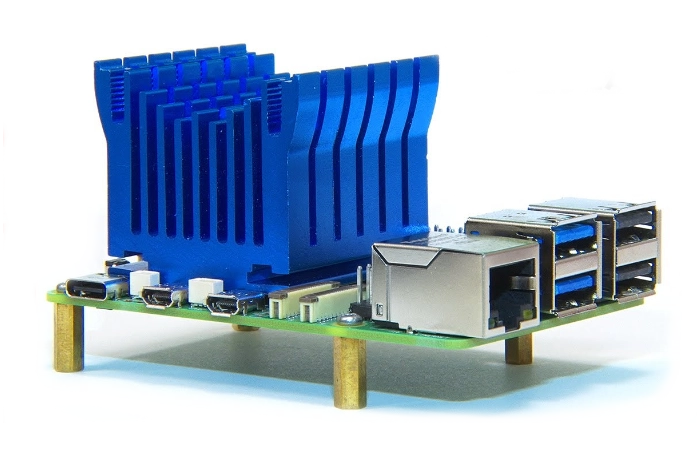The Raspberry Pi 5, the latest iteration of the popular mini PC series, is a powerful device that can handle a variety of tasks. However, like any computer, it generates heat during operation, which can affect its performance and longevity if not properly managed. One method of managing this heat is through passive cooling, a technique that dissipates heat without the use of mechanical components like fans. This article will delve into the process of passive cooling a Raspberry Pi 5, discussing its benefits, drawbacks, and the steps involved in setting up a passive cooling system.
Passive cooling is a method that relies on natural convection to move heat away from the processor and other components. This is typically achieved by using heat sinks, which are devices that absorb and disperse heat. The heat sink is attached to the heat-generating component, and as the component heats up, the heat sink absorbs the heat and disperses it into the surrounding air.
There are several benefits to using passive cooling on a Raspberry Pi 5. Firstly, passive cooling systems are silent, as they have no moving parts. This makes them ideal for environments where noise reduction is a priority. Secondly, passive cooling systems require less maintenance than their active counterparts. Without fans or liquid cooling components, there are fewer parts that can fail, reducing the need for regular maintenance. Thirdly, passive cooling is more energy-efficient, as it consumes no additional power. Finally, passive cooling systems are less likely to accumulate dust, as there are no fans pulling in air. This can be particularly beneficial in environments where cleanliness is a priority.
Raspberry Pi 5 video editing and performance tested
Watch the video kindly created by Christopher Barnatt over on the Explaining Computers YouTube website
Other articles you may find of interest on the subject of Raspberry Pi 5 mini PC
However, passive cooling does have its drawbacks. For one, it may not be as effective as active cooling solutions in maintaining optimal temperatures, especially under high computational loads or in high-temperature environments. Additionally, the heat sinks used in passive cooling can sometimes be bulky, increasing the overall size of the mini PC. Lastly, high-quality heat sinks and materials like copper can make passive cooling systems more expensive initially, although this may be offset by lower maintenance costs over time.
Raspberry Pi 5 passive cooling
To set up a passive cooling system for a Raspberry Pi 5, there are several steps to follow. First, choose a heat sink that is compatible with the Pi 5. Materials like aluminum and copper are commonly used due to their high thermal conductivity. Next, apply a small amount of thermal paste to the CPU and other heat-generating components before attaching the heat sink.
This improves the thermal connection between the components and the heat sink. After attaching the heat sink according to the manufacturer’s instructions, optimize the placement of the Raspberry Pi to allow for natural airflow around the heat sink. Finally, monitor the temperature of the Raspberry Pi using software tools to ensure the passive cooling system is effective under your specific use-case scenarios.
Passive cooling is a viable method for managing heat in a Raspberry Pi 5. While it may not be as effective as active cooling in some scenarios, its benefits of noise reduction, low maintenance, energy efficiency, and cleanliness make it a worthwhile consideration for many users. By understanding the benefits and drawbacks of passive cooling and following the steps outlined above, you can make an informed decision on whether passive cooling is suitable for your Raspberry Pi 5 setup.
Image credit : Christopher Barnatt
Filed Under: Hardware, Top News
Latest aboutworldnews Deals
Disclosure: Some of our articles include affiliate links. If you buy something through one of these links, aboutworldnews may earn an affiliate commission. Learn about our Disclosure Policy.







